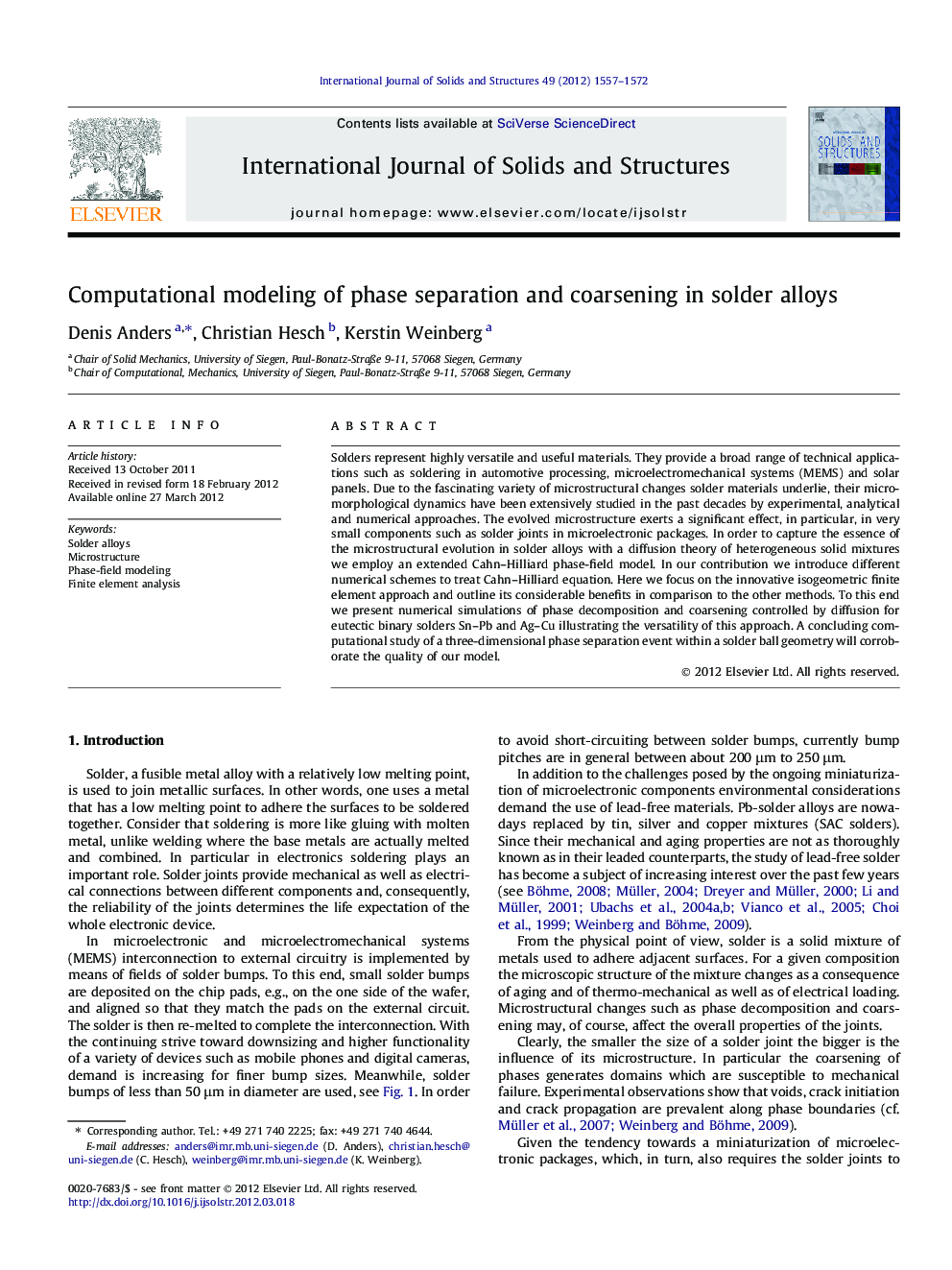| Article ID | Journal | Published Year | Pages | File Type |
|---|---|---|---|---|
| 278211 | International Journal of Solids and Structures | 2012 | 16 Pages |
Solders represent highly versatile and useful materials. They provide a broad range of technical applications such as soldering in automotive processing, microelectromechanical systems (MEMS) and solar panels. Due to the fascinating variety of microstructural changes solder materials underlie, their micromorphological dynamics have been extensively studied in the past decades by experimental, analytical and numerical approaches. The evolved microstructure exerts a significant effect, in particular, in very small components such as solder joints in microelectronic packages. In order to capture the essence of the microstructural evolution in solder alloys with a diffusion theory of heterogeneous solid mixtures we employ an extended Cahn–Hilliard phase-field model. In our contribution we introduce different numerical schemes to treat Cahn–Hilliard equation. Here we focus on the innovative isogeometric finite element approach and outline its considerable benefits in comparison to the other methods. To this end we present numerical simulations of phase decomposition and coarsening controlled by diffusion for eutectic binary solders Sn–Pb and Ag–Cu illustrating the versatility of this approach. A concluding computational study of a three-dimensional phase separation event within a solder ball geometry will corroborate the quality of our model.
